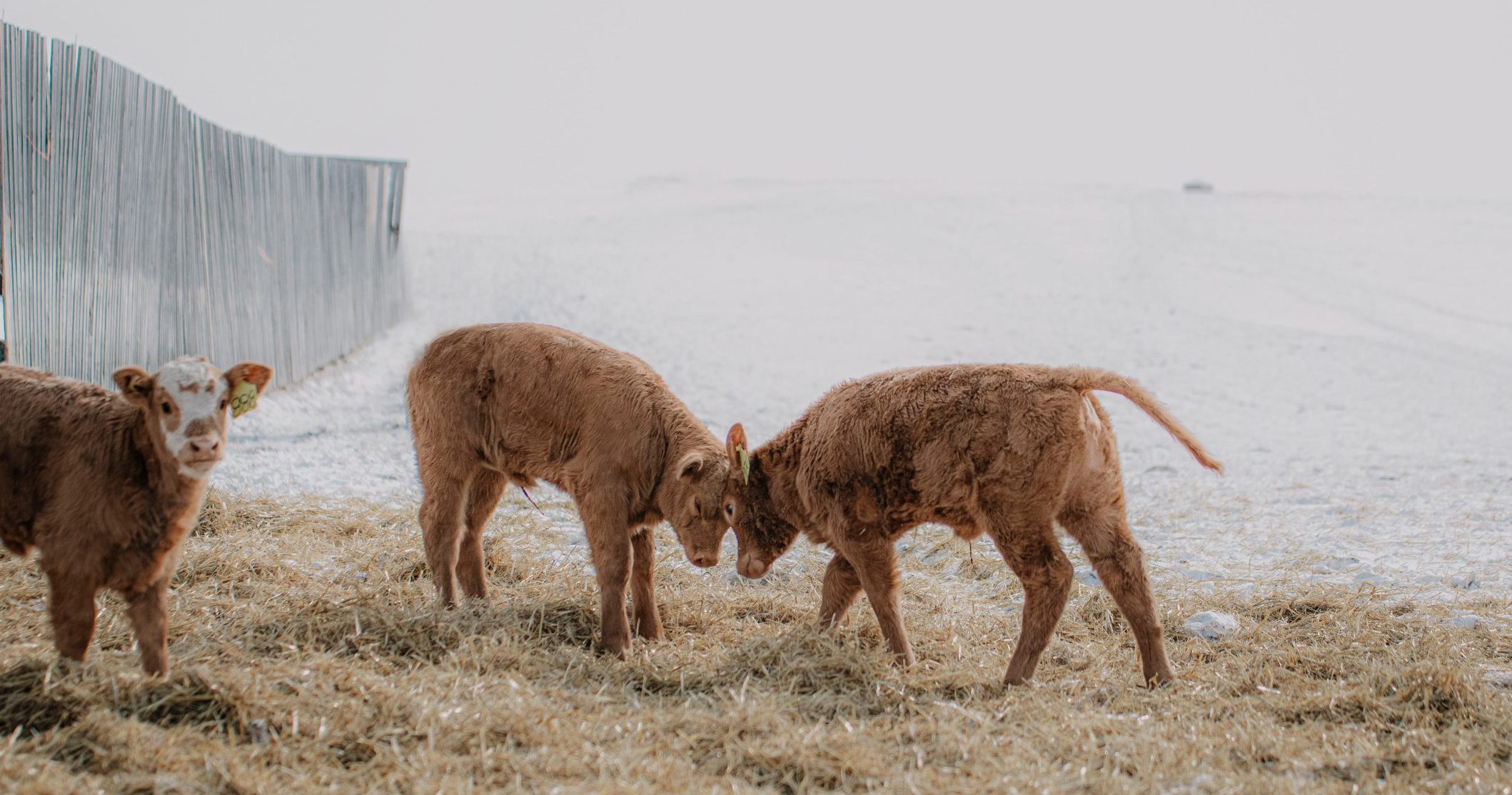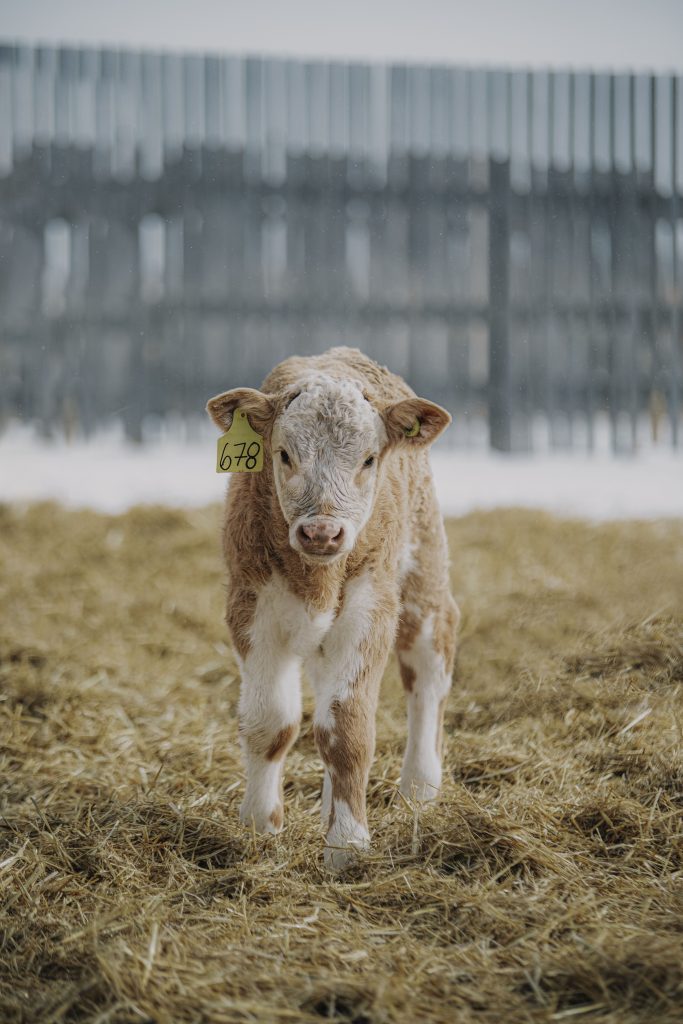AB Direct - Steers
Rail: 485.00-490.00 del
AB Direct - Heifers
Rail: 485.00-490.00 del
US Trade- Steers
Rail: 340.00-345.00 (IA, NE)
US Trade - Heifers
Rail: 340.00-345.00 (IA, NE)
Canadian Dollar
0.39

Recommendations for managing heifer health pre-calving
Across Alberta last fall cattle came off pasture light. This is a serious concern, especially when it comes to preparing for and protecting the health of the next generation. We asked beef nutrition consultant Barry Yaremcio for some recommendations to support pregnant heifers through late gestation and calving. Here is his advice.
Recognize unique requirements
The nutritional requirements of a bred heifer are higher than that of a mature cow. They are still growing when the first calf is born and reach mature weight when their second calf is born. It’s best to feed bred heifers separate from other animals, Yaremcio suggests.
Improving their body condition score to 3.0 or 3.5 will provide increased fat insulation to help the animal withstand cold temperatures, and support the production of a sufficient volume and quality of colostrum. “Having a high quantity and quality of colostrum provides calves with the passive immunity necessary to support good health,” explains Yaremcio.
Select high energy feed
Putting weight on heifers at this late stage of pregnancy requires a higher energy feed source. “They need a ration that combines different feeds to provide sufficient amounts of protein, energy, macro- and micro-nutrients and vitamins,” says Yaremcio.
Providing higher energy feed such as barley, oats, wheat, tricticale or rye in combination with hay or silage will support weight gain and improve body condition. “Grains have approximately 40% more energy on a pound-for-pound basis compared to hay or silage on a dry matter basis,” Yaremcio says.
Feeding byproducts can support high energy needs: culled potatoes, french fries, brewers grain, malt sprouts, wheat midge, wheat shorts, or oat groats.
Yaremcio offers this handy table to assess ration quality for bred heifers.

Take a measured approach to additives
Trying to stretch forage supplies by adding straw or lower quality forages is unavoidable when supply is tight. Remember that straw takes longer to digest and contains less protein and energy. In late pregnancy, when feed intake is limited and nutrient requirements are higher, it’s important to ensure the best quality feed goes in.
“Straw may reduce the overall cost of the ration, but it is also the most difficult to digest, and additives don’t change that.”
Barry Yaremcio, Beef Nutrition Consultant
Limit straw intake to two or three pounds for pregnant heifers, and leave it out altogether after calving. When considering ways to make straw more palatable, pencil out the cost compared to using grains, peas, lentils, or distillers’ byproducts to supply protein and energy, says Yaremcio.
“Straw may reduce the overall cost of the ration, but it is also the most difficult to digest, and additives don’t change that. If a cow has one to two pounds of undigested straw sitting in the rumen for a day, it reduces their feed intake,” says Yaremcio.
Supplement vitamins now
In 2021, more feed was harvested as silage. This doesn’t alter condition or quality, but the fermentation process destroys vitamin precursors. Yaremcio says, “Producers should have been supplying adequate amounts of vitamins A, D and E as soon as they started feeding silage.”
When feeding pregnant cows, you are not only preparing the animal for the calf in utero, but also for the next one.
He also points to the need for extra selenium in Alberta in some cases: “Vitamin E and selenium work together like a belt and a pulley. Both are needed for effective passive immunity provided by the colostrum.”
Minerals, too
Producers should have been boosting mineral intake when grass went dormant last fall. “I advise starting to feed a mineral supplement four months ahead. This allows micronutrients to reach optimum levels prior to colostrum production, which occurs four to six weeks prior to calving. It reduces the number of problems later on,” says Yaremcio.
If you’re not adding a mineral and are only providing salt, Yaremcio recommends fortified trace mineral salt with selenium. “It contains not only cobalt and iodine, but also copper, manganese and zinc. These trace minerals improve metabolic efficiency, so cows use their feed more efficiently.”
Feed for generation next

When feeding pregnant cows, you are not only preparing the animal for the calf in utero, but also for the next one. A thin cow will be challenged to put on weight between calving and the start of the next breeding season, and take longer to start cycling.
“Research has shown a 20 to 30 per cent reduction in pregnant cows when they are thin and lost weight between calving and the next breeding season. So you’re not only feeding that cow for this calf, but also preparing her for next breeding season,” Yaremcio says.
Test what you have
Finally, take feed samples and have them lab tested. “Without a feed test you don’t know where you’re starting or where you are going to end up,” says Yaremcio.
The best tools for sampling include a core sampler, grain probe and silage probe. A grab or hand sample usually won’t give an accurate quality measurement, Yaremcio notes. Nutritionists, feed salespersons, and county offices usually have sampling tools.
Spending a little money on feed sampling ensures you can provide a balanced ration, support weight gain, have fewer sick calves, fewer open cows next season, and possibly reduce ration cost. “It’s the best way to ensure you’re providing a ration that supports the healthiest outcome for cow and calf,” Yaremcio says.
This article was first published in Volume 2 Issue 1 of ABP Magazine (January 2022). Watch for more digital content from the magazine on ABP Daily.

